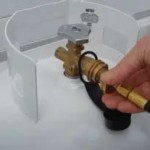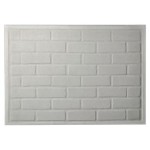Energy Efficient Electric Fireplace Heaters: A Comprehensive Guide
Electric fireplace heaters have become increasingly popular as supplementary heating solutions, offering a combination of ambiance and functional warmth. Their appeal stems from their ease of installation, safety features, and ability to mimic the aesthetics of traditional fireplaces without the associated maintenance and fuel requirements. However, with growing concerns about energy consumption and environmental impact, understanding the energy efficiency of electric fireplace heaters is essential for informed purchasing decisions.
This article examines the factors that contribute to the energy efficiency of electric fireplace heaters, explores different types of heaters, and provides guidance on selecting and utilizing these appliances for optimal energy savings.
Understanding Energy Efficiency in Electric Fireplace Heaters
Energy efficiency, in the context of electric fireplace heaters, refers to the appliance's ability to convert electrical energy into heat. A more efficient heater will produce more heat for a given amount of electricity consumed, resulting in lower energy bills and a reduced carbon footprint. Several factors influence the energy efficiency of these heaters, including the heating technology employed, the presence of smart features, and the overall design of the unit.
The primary metric used to assess the energy efficiency of a heater is its wattage. Wattage represents the rate at which the heater consumes electricity. A lower wattage indicates lower energy consumption; however, it's crucial to consider the heating capacity alongside wattage. A lower wattage heater might be more energy efficient but may not provide adequate heating for the intended space. Comparing the heat output (measured in BTU - British Thermal Units) per watt consumed is a more accurate way to determine efficiency between different models.
Thermostat control is another crucial factor. A more precise thermostat allows the heater to maintain a consistent temperature without overshooting, preventing unnecessary energy waste. Digital thermostats generally offer more accurate temperature settings and can contribute to improved energy efficiency compared to manual thermostats.
Beyond the core heating elements and controls, supplementary features like timers and remote controls can indirectly contribute to energy savings. Timers allow users to schedule heating periods, ensuring that the heater operates only when needed. Remote controls provide convenient temperature adjustments, preventing the heater from running at full power when a lower setting would suffice.
Types of Electric Fireplace Heaters and Their Efficiency
Electric fireplace heaters utilize various heating technologies, each with its own efficiency characteristics. The most common types include infrared heaters, fan-forced heaters, and oil-filled radiators.
Infrared Heaters: Infrared heaters work by emitting infrared radiation, which directly heats objects and people within its range. This direct heating method can be more energy-efficient than convection-based heaters, as it reduces the need to heat the entire room. Infrared heaters tend to be better at focusing the heat on specific areas, making them suitable for spot heating. However, their effectiveness diminishes with distance, and they may not be ideal for heating large, poorly insulated spaces.
Fan-Forced Heaters: Fan-forced heaters, also known as convection heaters, use a fan to circulate air over a heating element, distributing the warm air throughout the room. These heaters can quickly heat a space and are generally more effective than infrared heaters in larger rooms. However, the constant use of a fan can consume additional energy, impacting their overall efficiency. Models with variable fan speeds can offer some control over energy consumption.
Oil-Filled Radiators: Oil-filled radiators use electricity to heat oil within the unit, which then radiates heat into the surrounding environment. They heat up slowly but retain heat for a longer period, providing a more consistent and even distribution of warmth. Oil-filled radiators are often considered more energy-efficient than fan-forced heaters because they do not require a fan to circulate the air. The stored heat allows them to cycle on and off less frequently, reducing energy consumption over time.
The selection of the most energy-efficient type depends on the size of the room, the desired heating speed, and personal preferences. For spot heating in smaller areas, infrared heaters may be the most efficient option. For larger rooms, oil-filled radiators offer a consistent and efficient heating solution, while fan-forced heaters provide rapid heating but may be less energy-efficient in the long run.
Beyond these core technologies, some electric fireplace heaters incorporate hybrid systems, combining features of different technologies to optimize both heating performance and energy efficiency. For instance, some models may use infrared technology for direct heating and a small fan to circulate the air, providing a balance between spot heating and whole-room warming.
Maximizing Energy Savings with Electric Fireplace Heaters
Selecting an energy-efficient electric fireplace heater is only the first step. Optimizing its usage is equally important to maximize energy savings. Proper placement, thermostat settings, and insulation can all contribute to reducing energy consumption.
Placement: The placement of the electric fireplace heater significantly impacts its efficiency. Positioning the heater in a central location allows for more even heat distribution. Avoid placing the heater near drafts or windows, as this can cause heat loss and force the heater to work harder to maintain the desired temperature. Ensure that the heater is not obstructed by furniture or other objects, as this can impede airflow and reduce its effectiveness. If using an infrared heater, consider its direct heating range and position it accordingly to maximize its spot-heating capabilities.
Thermostat Settings: Utilizing the thermostat effectively is crucial for energy savings. Setting the thermostat to a comfortable but not excessively high temperature can significantly reduce energy consumption. Programming the thermostat to lower the temperature when the room is unoccupied or during nighttime hours can further enhance efficiency. Many modern electric fireplace heaters offer programmable thermostats that allow for customized heating schedules, optimizing energy usage based on individual needs and routines.
Improving Insulation: Addressing insulation issues in the room can significantly reduce the need for supplemental heating. Sealing drafts around windows and doors, adding insulation to walls and ceilings, and using window coverings can all help to retain heat within the room, reducing the burden on the electric fireplace heater. By minimizing heat loss, the heater can operate more efficiently and consume less energy.
Maintaining the Heater: Regular maintenance can also contribute to energy efficiency. Cleaning the heating elements and vents can remove dust and debris that can impede airflow and reduce heating performance. Regularly checking the thermostat and other components can ensure that they are functioning properly. Following the manufacturer's instructions for maintenance and care can prolong the life of the heater and maintain its efficiency over time.
Utilizing Zoning: Zoning refers to heating only the occupied areas of a home or building. Electric fireplace heaters are well-suited for zoning because they are portable and can be easily moved to different rooms as needed. By using an electric fireplace heater to heat only the specific room being used, rather than heating the entire house, significant energy savings can be achieved. This approach is particularly effective in larger homes or apartments where certain rooms may be unoccupied for extended periods.
Considering Smart Features: Some electric fireplace heaters come equipped with smart features, such as Wi-Fi connectivity and mobile app control. These features allow users to remotely monitor and control the heater's settings, providing additional convenience and energy-saving opportunities. For example, users can remotely turn off the heater if they forget to do so before leaving the house or adjust the temperature settings based on real-time weather conditions. These smart features can further optimize energy usage and enhance the overall efficiency of the electric fireplace heater.
Looking for Energy Star Certification: When purchasing an electric fireplace heater, consider looking for models that are Energy Star certified. Energy Star certified products meet strict energy efficiency guidelines set by the U.S. Environmental Protection Agency (EPA). These products have been independently tested and verified to meet high standards for energy performance, ensuring that they consume less energy and reduce greenhouse gas emissions compared to non-certified models. Choosing an Energy Star certified electric fireplace heater can provide assurance of its energy efficiency and help to lower energy bills.
By combining the selection of an efficient electric fireplace heater with proper usage practices, individuals can significantly reduce their energy consumption and lower their environmental impact while still enjoying the warmth and ambiance of a fireplace.

Are Electric Fireplaces Energy Efficient We Love Fire

Electric Fireplace Heater Are They Effective Types And Specs

Mythbusters Electric Fires Dimplex

Ce Rohs Approved Energy Saving Electric Wall Fireplace S Home Appliance Room Heaters China Made In Com
The 6 Best Electric Fireplace Heaters Of 2024

Eco Friendly Hearth Embrace Efficiency With Electric Fireplace Arttoreal

Costway 23 Electric Fireplace Insert Heater W Log Flame Effects Remote Control 1400w Com

Maxkon 16inch Electric Fireplace Heater Stove 1800w Portable Flame Thermostat

Are Electric Fireplaces Energy Efficient We Love Fire

Lifeplus Electric Fireplace Heater Freestanding Stove With 3d Realistic Flame For Indoor Home Safe Use 750w 1500w 17 Com








